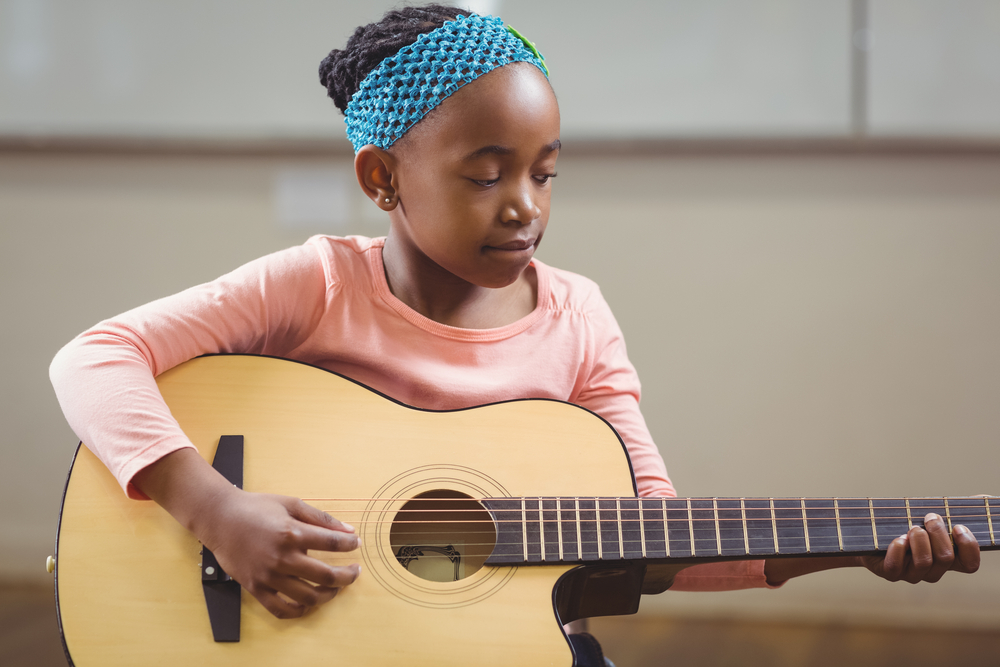Getting kids to practice their musical instruments can be a struggle, whether they’re getting musical homework from a teacher working out of their apartment or from the best music school Toronto has ever seen. While some kids pick up their instruments without having to be told, others need constant reminding.
Some parents resort to bribes and threats of taking away screen time or not signing up for music lessons anymore. But bribing and nagging children to practice would only make the activity feel like a chore. This doesn’t have to be the case with you and your children.
If you have a young musician learning to play their first electric guitar, piano, ukulele or any other instrument, read on for the tips and techniques that can help you encourage your children to practice and make practice sessions fun and something they will look forward to.
These tips and techniques can develop a kind of self-motivated discipline in your kids. This discipline and motivation will help get them to practice and do so willingly even without parental supervision. This also teaches them independent learning, an ability that they would need as they grow older.
Learning music involves having a positive outlook toward practice sessions, and that’s what we’re going to help you with today. This post is full of some great ideas on how you can make learning to play music fun and exciting for your kids.
We assure you that once you finish reading, you’ll have plenty of ideas of your own about how you can get your children to look forward to practice time. Each young musician is different, and of course, you know your children best, so you would know which techniques would work and which would need a little tweaking to suit each child’s unique personality.
Here’s a quick look at what we’re going to be discussing in this post.
- The importance of practice in learning music and how to make your kids understand why practice is important
- The practice schedule and why it’s good to let your child decide when to practice
- The practice log and how to use it effectively
- Making practice sessions exciting through games and other fun activities
- Achievement Unlocked – tips for celebrating accomplishments big and small
- The value of free play and improvisations
So, are you ready to be your children’s No. 1 motivator? Let’s get started!

Explaining the importance of music practice to children
The goal of practice is mastery of a skill. The more you become better at doing something, the more your self-confidence will grow as well. And the more confident you are, the better you will perform as a musician.
But how do you make children understand this? The practice involves repetition – a lot of it. It’s not uncommon for children learning music to complain, “But Mom, I’ve done that a thousand times already!”
This is the challenge that parents face: making children realize that to become skilled, you need to work hard. And working hard involves doing something over and over until it becomes second nature.
So how can you make children see that regular practice is important, that nothing is achieved overnight, and yes, you have to do things over and over?
One idea is to show examples. If your child has a musician, they look up to, watch an interview, video, or documentary with them – preferably one that tells the story of how they got started and how they practice. They, too, worked hard to develop their musical skills.
Seeing and hearing about how practice is important in becoming a better musician straight from someone they admire can help children acknowledge and accept it as part of the journey of making music.
Setting a practice schedule – let your child decide when to practice
Once children see the value of practice, they will be more inclined to do it, even when you’re not around to supervise. This is where the practice schedule comes in. Setting a practice schedule is the next step to helping children become independent, motivated learners.
One of the best things you can do for children learning to play a musical instrument is to put them in control of their practice schedule. Why? This would make them more likely to stick to it. Giving your child the power to decide on their practice schedule also teaches them to be responsible and accountable, and to manage their time wisely.
Providing your children with the opportunity to decide when to practice gives them a sense of mastery over their own life and teaches them how to be independent. If they’re still too young, you can help them figure out the best time, such as before or after school, or before or after doing their homework.
How long a practice session would be would depend on the child’s level of maturity. For primary school-age children, 20 minutes of practice is more than enough. Practice time can be lengthened as the child grows older.
For younger children, you can split practice sessions in two so they don’t feel as long. Say, 10 minutes in the morning before school or after breakfast and 10 minutes before dinner or when they’re done with homework.
Initially, you may need to experiment with different times to see what works best for your child. Some children find it more enjoyable to practice in the morning before school because their brains are fresh and they have more energy, while others prefer practising after doing their homework in the evening.

Making a practice log and using it effectively
You can motivate your child by creating a practice log or chart, which would contain the practice goals for the day – such as mastering two chords on the guitar, learning a new strumming pattern or working through three bars of music.
If your children are learning with the help of a music teacher, coordinate with the teacher about the week’s lessons and activities. Plot the activities onto the practice schedule and a chart that can help your child keep track of what they need to do on a certain day.
For instance, if the lesson for the day is the A minor chord the activity might involve playing it repeatedly 10 times, then taking a quick break, then playing it again with the eyes closed.
Encourage your child to write about what they did (“Played the Am chord 30 times while closing my eyes”), what they need to do next (“Learn to play the D chord”), how it felt (“It was fun and easy!”) and other things (“I think this is my new favourite chord”). Leave a space where your child can make notes about the practice session, or if there’s anything they’re having trouble with. This is something they can show to their teacher to help them figure out ways to improve.
If your child is learning on his or her own, you can help them make a practice log by consulting lesson plans or outlines online.
The practice log can help children look at practice as a step-by-step process of achieving goals. For instance, if the goal is to practice chord changes from the C major to the D major chord and they’re having a tough time doing so, they can write it down. You can then help to find a solution, such as alternative chord shapes.
Try out different chord shapes – if your child finds them easier to do, write them down. If not, write about them as well. Logging problems, experiments and solutions is helpful for self-improvement. Practice logs and notes can help children work out problems in a systematic manner, which is a skill that they can apply in their daily life.
Children will be more motivated to pick up their instrument and practice if they have goals to achieve and they have a way of seeing how much they’ve progressed and how they managed to overcome their difficulties in learning their instrument. Practice logs help children feel accountable for their progress and also give them pride in their work.
To make practice more like a fun activity rather than a boring chore, incorporate age-appropriate games or activities in every practice routine.
Some parents use coins, which the child gets to keep when he or she is able to play a tricky measure three times without missing a note. Some use colourful practice beads, which children can move from one end of a rod to another once they finish an exercise. You can even make a board game where the goal is to get to the finish line after doing practice exercises.
Here are other fun-tastic ideas for making practice sessions both educational and enjoyable:

Making practice sessions fun with games
- Go on tour! Have your child play an activity or exercise in different parts of the house like the garage, the kitchen, the garden, the bathroom and so on. Bathrooms usually have the best acoustics, so don’t be surprised if your child stays there a bit longer.
- Do something silly while playing repetitions. Doing something the same way over and over can get pretty boring, so spice it up with some silliness. Challenge your child to play each repetition with a funny trick, such as making a face, sticking out their tongue, wiggling one foot and so on.
- Put up a show. No, not a formal recital but a mini concert at home, attended by your family, pets and your child’s favourite stuffed animals and action figures. It’s a wonderful way to build confidence in front of an audience and show off the skills your child worked hard to develop.
These activities may require parents to be present, but you can modify them or come up with your own games that will allow children to practice and play even when you’re not around. For example, you can have them record or do a vlog of their practice session, complete with the silly faces and audience of toys.
Celebrate accomplishments
Celebrating accomplishments will keep the child motivated to achieve the goals that can only be achieved through regular practice, such as mastering three chords or playing a scale without missing a note.
You can keep track of achievements using a chart (complete with star-shaped stickers!) and a reward system. For example, you can get ice cream for mastering three chords, go to a movie when they are able to play a new song without missing a note or give them a new guitar after their next recital.
Give them time to play freely
Lastly, let your child play with their instrument and not just practice it. Set aside a time when they can just ‘let go’ and play whatever they want – no music sheets or tabs. Let them explore the different sounds and tunes they can make.
Play gives children the opportunity to practice and apply what they’ve been learning. So, encourage your children to improvise and be spontaneous – they may just surprise you with what they come up with.
Those are just some of the ways you can motivate kids to practice on their own. Don’t forget to compliment your children for all the effort they put into learning to play their instrument. Tell them you’re looking forward to seeing them becoming better and better as each day progresses. We hope those help in making practicing at home a fun and rewarding activity. Good luck!
Learning Music at Home: How to Motivate Kids to Practice On Their Own








